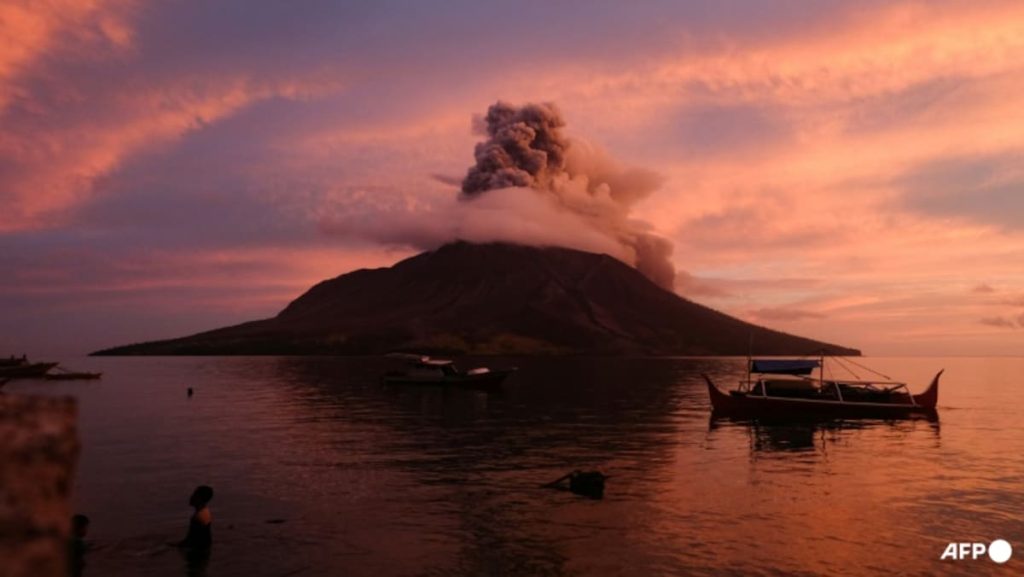Indonesian authorities have lowered the alert level of Mount Ruang volcano after it erupted multiple times in the past week. The volcano, located in Indonesia’s outermost region, had caused the evacuation of thousands of residents due to lava, ash columns, and lightning. Despite initial warnings that the threat was not over, volcanic activity has decreased, leading to the lowering of the alert level.
The country’s volcanology agency downgraded the alert level to the second-highest on a four-tiered system, indicating a decrease in volcanic activity at the crater. The exclusion zone around the volcano was also narrowed from 6km to 4km, allowing some residents to return to their homes. This decision was made based on visual and instrumental monitoring of the volcano, showing a decrease in activity.
Sam Ratulangi International Airport in Manado, located over 100km from the volcano, reopened after being closed for days due to volcanic ash. The airport serves as a hub for international flights to destinations such as Singapore, South Korea, and China. The closures had caused disruptions to air travel in the region, affecting both domestic and international flights.
Despite the evacuation of over 6,000 residents from Tagulandang island, no injuries or deaths were reported as a result of the volcanic eruptions. The evacuees were moved outside the exclusion zone as a precautionary measure. Indonesia, situated on the Pacific “Ring of Fire”, is prone to frequent seismic and volcanic activity. The country has a high number of active volcanoes, making it susceptible to eruptions and earthquakes.
The recent events at Mount Ruang serve as a reminder of the constant threat of natural disasters in Indonesia. The country’s authorities and volcanology agency are actively monitoring volcanic activity to ensure the safety of residents living near active volcanoes. The lowering of the alert level at Mount Ruang indicates that the situation has stabilized, allowing for some normalcy to return to the affected areas.
As Indonesia continues to grapple with the challenges posed by its geographic location, efforts are being made to improve disaster preparedness and response. The recent eruptions at Mount Ruang highlight the need for vigilance and readiness in dealing with volcanic activity. Through effective monitoring and coordination, authorities aim to minimize the impact of such events on the population and infrastructure in the region.















